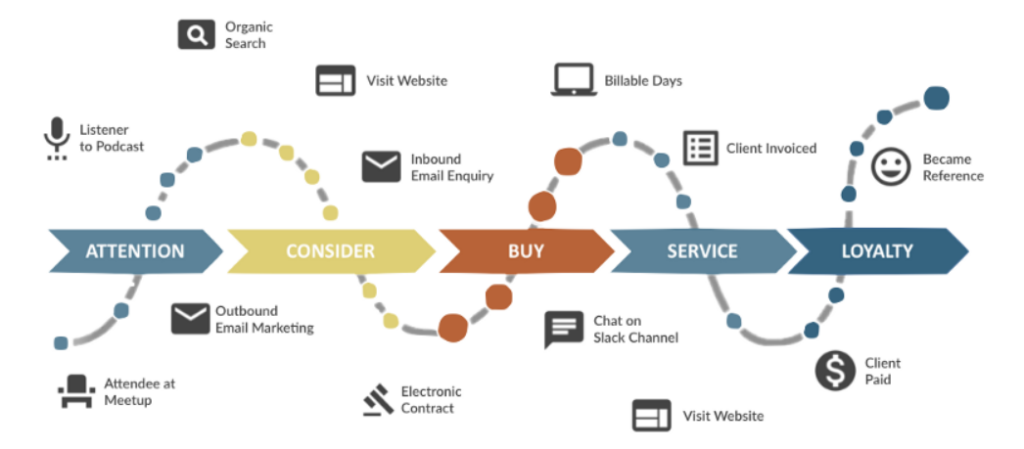In today’s competitive market, understanding customer behavior and optimizing their experiences has become crucial for business success. One of the most effective ways to achieve this is through Customer Journey Analytics (CJA). This tool allows businesses to track, analyze, and optimize every interaction a customer has with their brand, from first contact to post-purchase.
In this article, we’ll explore how to effectively use Customer Journey Analytics to drive better results and enhance customer experiences.
How to Use Customer Journey Analytics
Here’s a step-by-step guide to help you unlock the full potential of Customer Journey Analytics for your business:
1. Understanding Customer Journey Analytics
Customer Journey Analytics is the process of collecting and analyzing data from multiple touchpoints across the customer journey. It offers a holistic view of how customers interact with your brand, enabling businesses to identify patterns, pain points, and opportunities for improvement.
The key advantage of CJA is that it doesn’t look at interactions in isolation. Instead, it connects the dots between various stages of the customer journey, providing a complete picture of the customer’s experience from awareness to conversion and beyond.
2. Mapping the Customer Journey
Before diving into analytics, it’s essential to map out the customer journey. This involves identifying the key stages your customers go through when interacting with your brand. The typical stages are:
- Awareness: How do customers first discover your brand?
- Consideration: What steps do they take when evaluating your products or services?
- Decision: What influences their final purchase decision?
- Post-Purchase: How do you retain customers and keep them engaged after the initial sale?
Having a clear customer journey map helps in focusing your analytics efforts on the most impactful touchpoints.

3. Gathering Data from Multiple Channels
The strength of Customer Journey Analytics lies in its ability to integrate data from multiple sources. This can include:
- Website interactions (e.g., page views, clicks, time on site)
- Social media engagement (e.g., likes, shares, comments)
- Email campaigns (e.g., open rates, click-through rates)
- Customer service interactions (e.g., chat logs, call transcripts)
- Transaction data (e.g., purchase history, abandoned carts)
By collecting data from all relevant channels, you’ll be able to see a more complete picture of how your customers move through the journey.
4. Analyzing Customer Behavior
Once you’ve gathered the data, it’s time to analyze it to uncover valuable insights. Here are some key areas to focus on:
- Identifying pain points: Are there stages in the journey where customers tend to drop off? Analyze why this might be happening and look for ways to address the issue, such as simplifying the checkout process or improving the user experience.
- Segmenting customers: Grouping customers based on behaviors, demographics, or purchase history can help you deliver more personalized experiences. For example, new customers may require different messaging than returning ones.
- Measuring key performance indicators (KPIs): Track metrics like conversion rates, customer lifetime value (CLV), and customer satisfaction (CSAT) to evaluate the effectiveness of your customer journey optimization efforts.
5. Improving Personalization and Engagement
With insights from Customer Journey Analytics, you can enhance personalization throughout the journey. For example:
- Tailored messaging: Use data to send targeted emails or offer relevant product recommendations based on previous interactions.
- Dynamic website content: Adjust website elements like banners or product suggestions in real-time to reflect each customer’s preferences and behavior.
- Behavior-based triggers: Implement automated actions, such as sending a discount code when a customer abandons their cart or offering a tutorial if they’re struggling with a feature.
Personalization improves engagement and builds stronger relationships with customers, leading to increased loyalty and higher conversion rates.
6. Predictive Analytics for Future Success
Customer Journey Analytics can also be used to predict future behavior. By analyzing historical data, you can forecast customer needs and take proactive steps to meet them. For example, if analytics show that customers typically upgrade to a premium plan after three months, you can tailor your marketing campaigns to promote upgrades during this window.
7. Continuous Optimization
The customer journey is dynamic, and so should your approach to analytics. Regularly review and update your customer journey maps based on new data and changing customer behaviors. A/B testing different approaches at various touchpoints can also help you refine your strategies for better results.
Conclusion
Customer Journey Analytics is a powerful tool for businesses looking to optimize their customer experiences. By gathering data from multiple touchpoints, analyzing behaviors, and implementing insights, you can create a seamless journey that delights customers and drives business success. As you continue to evolve your strategy, remember that customer needs change over time—so continuous monitoring and improvement are key to staying ahead in the market.
As businesses strive to enhance their customer experiences, leveraging Customer Journey Analytics through ProPS services can be a game-changer. ProPS offers advanced tools and solutions designed to seamlessly integrate data from various touchpoints, providing a comprehensive view of the customer journey.
Let ProPS be your partner in transforming customer data into meaningful, actionable strategies that foster growth and loyalty.
